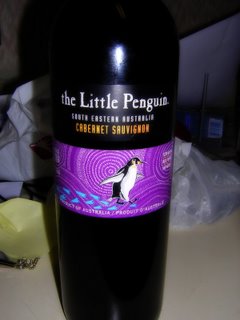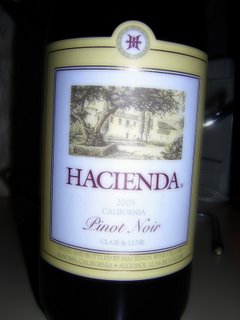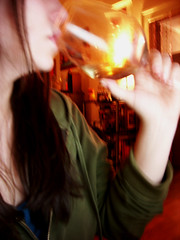Our staff foodie has
a story out today about starting a wine cellar. Basically, the premise of the article is that you needn't freak out and think you need a head full of great vintages and a dedicated, temperature-controlled room to start a cellar. All you need, Leslie says, is a dark, undisturbed space whose temperature, rather than being cool, is simply constant.
The experts suggest using the back of a closet, stacking bottles on their sides to keep the corks moist.
Ed McCarthy, one of the authors of "Wine for Dummies" (a book I'll be mentioning frequently to my parents when Christmas/my birthday rolls around) shares this advice:
"People can start with wines in the $18 to $20 category," he said. "Most people aren't going to start out spending $75 on a bottle. And there are some inexpensive Bordeaux and Burgundies people should consider. Believe it or not, the best values are not from the U.S."
Egads! I've only once spent more than $20 on a bottle and that was by accident. I'm still stuck in the $7-$15 range. I want to see a list of tips for stocking cheap wines. Do the same principles apply? Do cheap wines by default not age very well because of ... their cheapness? Inquiring minds and all that.
What surprises me in McCarthy's quote is his assertion that the best values can be found across the pond(s). I tend to stick with domestic wines (love my California reds) because I usually assume that the shorter distance they have to travel to get to me, [insert random benefit here]. It's taking some work challenging that assumption. (Work, ha! Since when is drinking work?)
So, despite the friendly encouragement from the enthusiasts in the article, starting a wine collection still seems to be an enormously complicated undertaking. (Of course, what obnoxiously bourgeois hobbies aren't ridiculously complicated? The middle class loves jumping hurdles like thoroughbreds, to prove their dedication to a craft that defines them in an utterly post-modern way.)
For one, you've got to have the space. Right now I have two small closets in my apartment. One houses boxes I never unpacked (10 or so) and the other houses my suitcase set and my clothes. It's conceivable that I could hollow out some room at the base of one of the closets. But then, a week later, I will run the risk of forever losing whatever wine gets deposited, because, you see, the things that go into my closets often never find their way out.
For two, you've got to have money. I cringe when I think about dropping $13 on a bottle; how the hell would I pony up the cash for an entire case? And then convince myself to save what I'd bought and not drink it to drown the pain of dropping a ton of money on several bottles of wine I'm not allowed to drink for a couple of years?
No one told me wine enthusiasm was part masochism.
 I'm on a mini-quest (one of those quests that you go on when you get around to thinkin' about it) to try more Rieslings, and this week's attempt has not proven disappointing.
I'm on a mini-quest (one of those quests that you go on when you get around to thinkin' about it) to try more Rieslings, and this week's attempt has not proven disappointing. 



